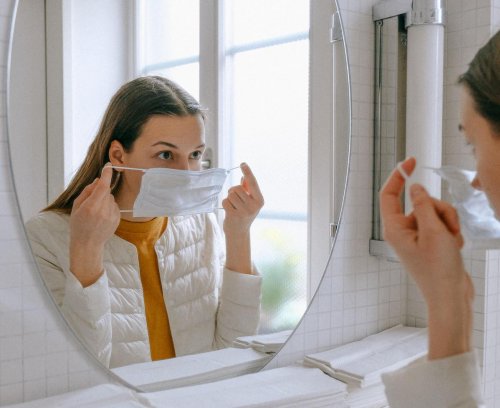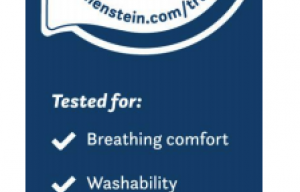Decorative fabrics leader helps combat mask shortage
Fibres/Yarns/Fabrics
Masks really do make a difference
Research shows reduction in daily and cumulative cases after the face mask mandates came into force in many US states.

6th April 2021
Innovation in Textiles
|
Texas, USA
The US Centers for Disease Control and Prevention have recommended face masks to protect against COVID-19 practically since the pandemic began, and still the debate about their efficacy endures.
New analysis from Texas Tech University’s Department of Environmental Toxicology for Cotton Incorporated, however, illustrates suggests how much of a difference those face coverings have made.
Published in the International Journal of Environmental Research and Public Health, the research analysis by doctoral student James Ayodeji and his adviser Seshadri Ramkumar, professor of chemical countermeasures and advanced materials, shows that roughly two-thirds of states saw a reduction in Covid-19 cases in the three to four weeks after enacting a mask mandate.
The researchers examined confirmed cases of Covid-19 from April 1-Dec. 31, 2020, for US states with and without mask mandates. They analyzed the daily numbers of new cases, cumulative confirmed cases and infection rates per 100,000 people.
After extrapolating data trends from the 10-20 days before each state’s mask mandate was enacted, the pair projected the number of cases that would have been confirmed at 21 and 28 days after the mandate, had the trend continued. By subtracting the actual numbers of cases on those days from their projections, they determined an approximate number of cases the mask mandates helped to prevent in each state.
Their research determined that 63% of the states saw a reduction in daily and cumulative cases 21 days after the mandates began, and 66% saw a reduction after 28 days. New York, Iowa and Massachusetts showed the greatest reductions after their mask mandates went into effect. New York’s actual number was 111,417 cases lower than its projection after 21 days, and 160,956 lower than projected after 28 days. Iowa’s actual case numbers were 49,750 and 69,448 lower, respectively, and Massachusetts’ 23,816 and 35,104 lower.
Not all states saw such success. California’s number of actual cases were 74,276 higher than projected 21 days after its mandate was enacted, and 114,937 higher at 28 days. Michigan’s case numbers were 29,743 and 64,892 higher than projected, respectively. The case count in Texas was 35,026 higher than projected at 21 days and 41,723 higher at 28 days.
The data shows the potential difference face coverings can make but only if mask mandates are adhered to and masks are worn properly. If not, users will touch the face more frequently to adjust the fit of the mask, which can increase the likelihood of transmission. The communal use of face coverings in conjunction with other mitigating measures provides maximum protection, the researchers emphasised.
“Being a material scientist, I never thought that a material made from cotton and its blends – a face mask – would have so much global impact in saving lives,” Ramkumar said. “It makes it clear that to solve global problems, multidisciplinary research is the need of the hour.”
The work formed part of a project on the health and medical protection markets for cotton funded by Cotton Incorporated, USA.

Business intelligence for the fibre, textiles and apparel industries: technologies, innovations, markets, investments, trade policy, sourcing, strategy...
Find out more





